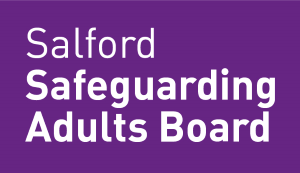Domestic Abuse
Being in an abusive relationship could be a factor that causes someone to self-neglect.
Controlling or coercive behaviour does not relate to a single incident, it is a purposeful pattern of behaviour which takes place over time in order for one individual to exert power, control or coercion over another. Such behaviours might include:
- Isolating a person from their friends and family;
- Depriving them of access to support services, such as specialist support or medical services;
- Depriving them of their basic needs;
- Taking control over aspects of their everyday life, such as where they can go, who they can see, what to wear and when they can sleep;
- Repeatedly putting them down such as telling them they are worthless;
- Enforcing rules and activity which humiliate, degrade or dehumanise the victim;
There may be situation where an informal carer is very involved in the person's care, can involve a complex mix of elements including controlling and coercive behaviour, dependency and self-neglect. In these circumstances it is important to:
- Have discussions with the person who is self-neglecting separately in order to discuss any aspects of coercion
- Establish with the informal carer, how they perceive their caring role, what care and support they provide, what care and support they believe the person requires and if they need any support in their role as an informal carer - a carer's assessment should be offered.
- If you are concerned that a person is experiencing domestic abuse or coercive / controlling behaviours, you should complete the referral to the Safe in Salford Domestic Abuse Service (or other specialist service if more appropriate) and/or MARAC (multi-agency risk assessment conference).
The referral form incorporates the DASH (Domestic Abuse, Stalking and Honour based violence) Risk Indicator Checklist which will help to assess the risks to the person and the support required.
MARAC is a multi-agency forum for sharing information and jointly planning responses where the person is considered to be at high risk of death or serious injury. If the adult meets the criteria for MARAC (either due to the DASH score or because of professional judgement), the referral form should also be uploaded to Sharepoint by a designated representative within the service, in line with local processes.
For further information regarding Domestic Abuse and the Toolkit, please visit the SSAB website, Domestic Abuse webpages which also include definition, local support and referral form including the DASH Risk Assessment.
Children (Think Family)
If you are supporting an adult and there are any children or young people, you must consider the impact of the adult’s self-neglect on them. If an adult is neglecting themself, they could also be putting their child/children at risk of harm or neglect.
Please see the Safeguarding Children Partnership for guidance on neglect of a child.
Please also refer to the Think Child – Think Adult – Think Family Guidance.
If the child or young person under 18 provides regular and ongoing care and emotional support to a family member who has care and support needs. A referral to Salford Carers Centre should be considered for additional support to be provided. (Care Act 2014, S61)
For more information on Young Carers, see Young Carers•Salford City Council
Housing/Homelessness
Though homelessness is traditionally associated with rough sleeping, it is now accepted to be broader than that. The term covers a spectrum of living situations notable by the absence of safety, security and stability, including:
People residing in temporary accommodation: night or winter shelters, hostels, B&Bs, women’s refuges
‘Statutory homeless’: people who local authorities have a legal duty to secure a home for
People sleeping rough: sleeping in the open air, or in places not designed for human occupancy
Hidden homeless: staying with friends/ family/acquaintances, ‘couch-surfing’ or ‘squatting’
Response
Duty To Refer – The Homelessness Reduction Act 2017 ‘Duty to Refer’ means that partner agencies must consider the housing circumstances of any person who has engaged with them. If any housing issues are identified, partner agencies must make a referral to the local authority homelessness/housing options team, with the person’s consent
For further information, see Public duty to refer homelessness•Salford City Council
Consider raising a statutory safeguarding adults concern - When there is evidence that a homeless adult with care and support needs is at risk of abuse or neglect, a safeguarding concern should be raised in line with multi-agency safeguarding adults’ procedures. Even if the harm is believed to be caused by self-neglect, and the adult is assumed to have mental capacity to make the decisions resulting in self-neglect, safeguarding adults’ policies and procedures should still be applied.
Safeguarding adults•Salford City Council
Multi-Agency Working - If the statutory Safeguarding duty is not met, then consider initiating collaborative working supported by existing legislation to support the adult’s wellbeing i.e. Care Act 2014, Equality Act 2010, Human Rights Act 1998, Housing Act 1996, Mental Capacity Act 2005, Mental Health Act 1983 and Homelessness Reduction Act 2017.
Adult safeguarding and homelessness: experience informed practice | Local Government Association
Safeguarding in Housing - Salford City Council

